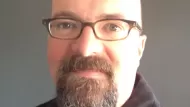It’s always tempting returning from a vacation to a foreign country to come to conclusions about how that society works. This isn’t entirely a bad thing- after all, exposure to different ways of life are mind-expanding and suggest new possibilities. My first trip to Rome redefined the way I think of public space, and set me on a path leading to a career in urban planning. Along the Philosopher's Walk in Kyoto.
It's always tempting returning from a vacation to a foreign country to come to conclusions about how that society works. This isn't entirely a bad thing- after all, exposure to different ways of life are mind-expanding and suggest new possibilities. My first trip to Rome redefined the way I think of public space, and set me on a path leading to a career in urban planning.

Along the Philosopher's Walk in Kyoto.
And now I've been lucky enough to spend a week and a half in Tokyo and Kyoto. On a personal level, the trip was deeply satisfying. The food is delicious (except perhaps for a fanatical obsession with tofu and "milk skin" in Kyoto) and the historic sites are breathtaking (the Giant Buddha of Nara is particularly so). And for a culture so exotic to my experience, I felt strangely comfortable navigating the landscape.
From an urban perspective, what I saw in Tokyo and Kyoto made me sad for the United States. The infrastructure and streetscapes in Japan are exponentially better planned, executed and maintained than our own. Riding in a tour bus through downtown Tokyo, I couldn't help but envy the flawless blacktop – so different from the cracked and fissured streets of Los Angeles. Density is the only true option, and comes in a plethora of forms, from high rises to compact two-story residential and 4-story apartment buildings. The rail system is not only extensive, but also frequent and on time. The Shinkansen ‘bullet' trains leave every 15 minutes from Tokyo to Kyoto and back again.
In many ways, the country I was led to expect – the manga-obsessed, techno-culture of the future – doesn't seem to exist, at least not in the blatant terms of common cultural stereotypes. What does exist is a culture that is traditional and remarkably untouched by outside influence. I can't help but consider that this homogeneity is the key to density.
Unlike most of the Western world, Japan's traditional building forms are still alive and well. In Kyoto, modern buildings blend harmoniously with older structures because they follow the same minimalist precepts. It is no wonder that Frank Lloyd Wright was fascinated by Japanese architecture- the Japanese are able to create a sense of harmony and space that is difficult to match. In the close-knit streets of Kyoto's Gion District, I got a glimpse inside a doorway to a rock garden entryway that couldn't have been more than 100 sq. ft. but created a feeling more spacious and peaceful than the backyard of the Brady Bunch.

Modern and traditional homes blend together in this narrow street in Kyoto.
I also discerned - as much as it is possible to discern anything in just one short visit - a unique sort of psychological public space: a regard for interactions that take place between strangers, outside of home and business. I was surprised to find on my first night that the busy restaurant we entered was almost silent but for the sounds of the kitchen. This polite regard for the space of others continued throughout much of my trip, and never felt repressed or forced- it was just the way of things. I won't even try to unpack all the factors that contribute to that sensibility. No doubt, religion, culture, and design all play a part. But there is no question that these behaviors make living and interacting in close proximity easier and more pleasant.
Unfortunately, my conclusion that these advantages in some way stem from a long tradition of compact living and cultural commonality doesn't offer much hope for us over here. We'll have to work our way uphill with newer examples like Portland and Vancouver, or our few remaining historical neighborhoods such as North Beach in San Francisco and the East Village in NY. But for true urbanists, I highly recommend a trip over the water to experience the beauty of density and Japanese design.
A technical note: the images above were taken with a Flip Mino video camera, which I'll be covering in my upcoming course Video for Planners on Thursday April 30th at 11am.

Planetizen Federal Action Tracker
A weekly monitor of how Trump’s orders and actions are impacting planners and planning in America.

Chicago’s Ghost Rails
Just beneath the surface of the modern city lie the remnants of its expansive early 20th-century streetcar system.

San Antonio and Austin are Fusing Into one Massive Megaregion
The region spanning the two central Texas cities is growing fast, posing challenges for local infrastructure and water supplies.

Since Zion's Shuttles Went Electric “The Smog is Gone”
Visitors to Zion National Park can enjoy the canyon via the nation’s first fully electric park shuttle system.

Trump Distributing DOT Safety Funds at 1/10 Rate of Biden
Funds for Safe Streets and other transportation safety and equity programs are being held up by administrative reviews and conflicts with the Trump administration’s priorities.

German Cities Subsidize Taxis for Women Amid Wave of Violence
Free or low-cost taxi rides can help women navigate cities more safely, but critics say the programs don't address the root causes of violence against women.
Urban Design for Planners 1: Software Tools
This six-course series explores essential urban design concepts using open source software and equips planners with the tools they need to participate fully in the urban design process.
Planning for Universal Design
Learn the tools for implementing Universal Design in planning regulations.
planning NEXT
Appalachian Highlands Housing Partners
Mpact (founded as Rail~Volution)
City of Camden Redevelopment Agency
City of Astoria
City of Portland
City of Laramie



























